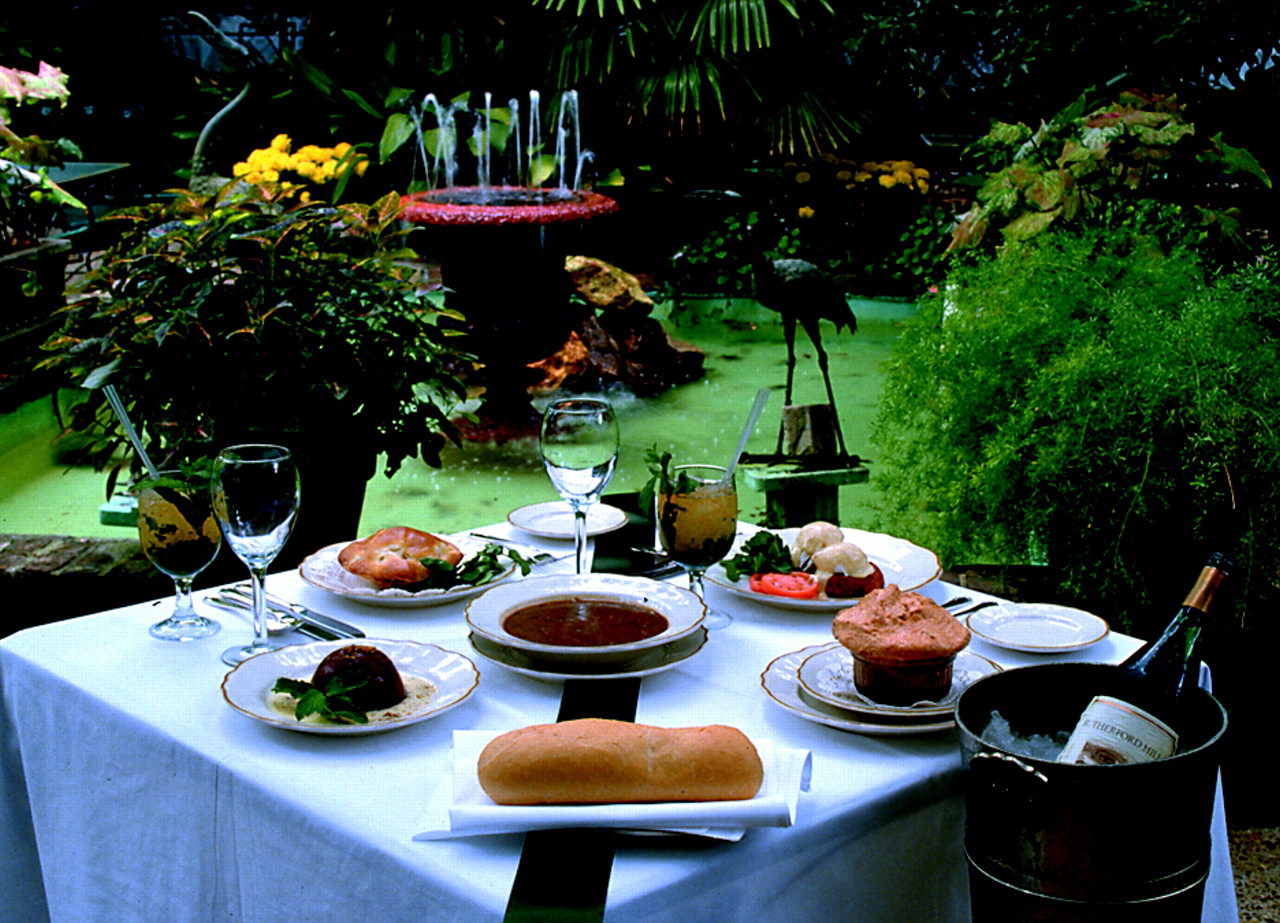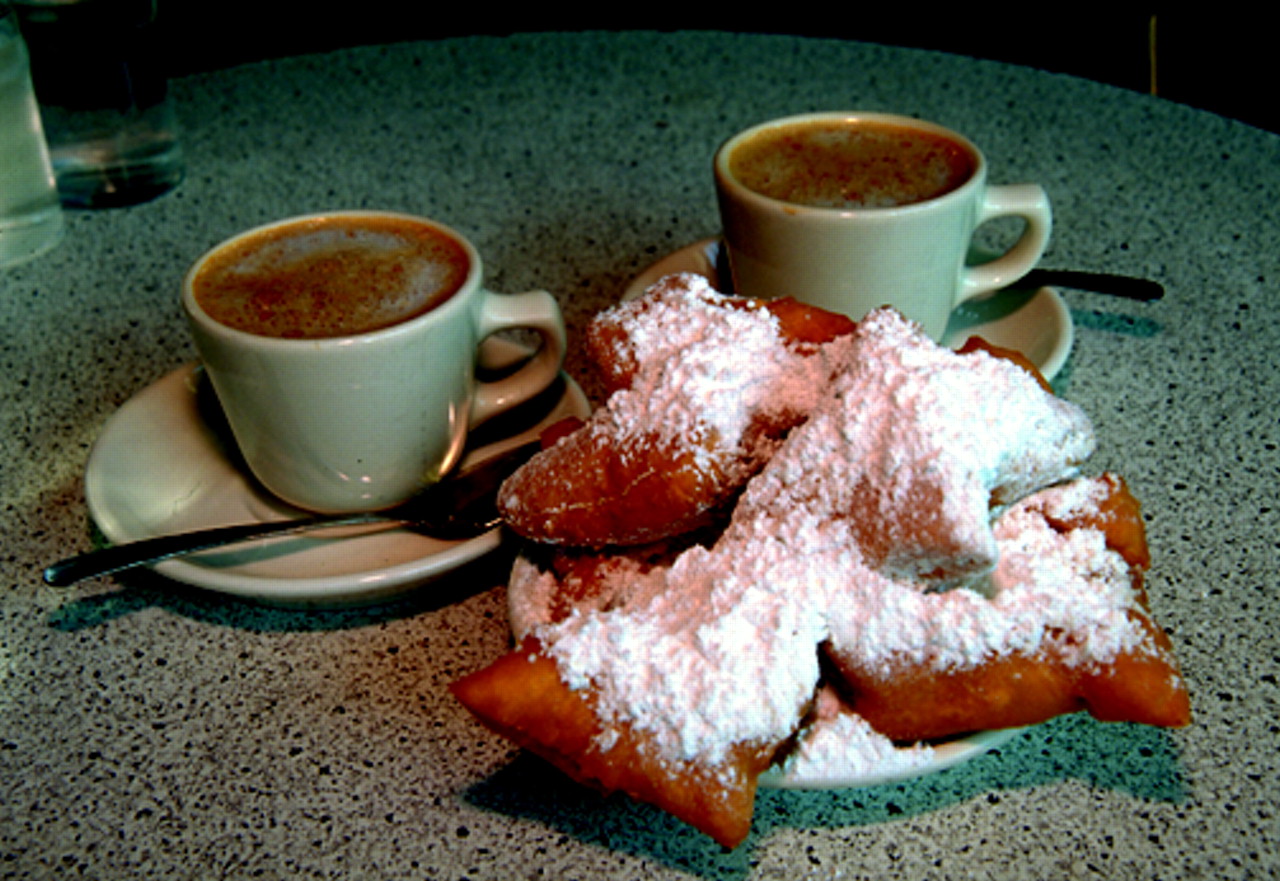There’s no place like New Awlins for dining out. Country-and-western singer Hank Williams Sr. paid his respects to Cajun food in a now-classic ditty about “jambalaya, crawfish pie, and filé gumbo.”
However, locals will tell you that Creole food is native to urban New Orleans, while Cajun food was imported from the rural countryside. Creole food is based on recipes French settlers brought with them from France in the early 18th century, which they adapted to the availability of local fish and game and ingredients used by Native Americans and later African slaves.
Cajun food, which tends to be slow cooked and highly seasoned, is native to rural Louisiana, where ancestors of French Canadians settled after fleeing the area now called Nova Scotia when the British conquered it in the 18th century. (Since the region was then known as Acadia, the settlers were called Acadians, which was mispronounced as Cajuns.)
Immigrants from Italy (mainly Sicily), the Caribbean, West Africa, Germany, Ireland, and more recently Vietnam have also made New Orleans their home, bringing their unique brands of cooking with them. It is not unusual to find Italian/Creole or other variations on Creole or Cajun cooking as well as time-honored classics.
When it comes to the crème de la crème of restaurants in New Orleans, Commander’s Palace, in the Garden District, is an undisputed favorite. It was named best restaurant in the United States in 1997 by
Food and Wine magazine. A native turned restaurant critic describes Commander’s as “the crown jewel of the Brennan family restaurants that draws the city’s finest chefs.”
The 1880s-era Victorian restaurant has several rooms, attentive staff, and prix-fixe meals for around $35. Its signature appetizers include turtle soup with sherry, shrimp, and tasso (a local variety of smoked ham) with five-pepper jelly. Frommer’s 2001 Best of New Orleans recommends the Creole main dishes such as roasted quail stuffed with Creole crawfish sausage. The desserts are divine, especially the famous bread pudding soufflé.
Not surprisingly, former Commander’s chefs Emeril Lagasse and Paul Prudhomme have opened their own restaurants and gained national fame. Prudhomme is given much of the credit for spreading the culinary trend of blackened fish. Emeril’s in the Central Business District and Emeril’s Delmonico Restaurant and Bar in the Warehouse District feature innovative Creole food, while Paul K’s Louisiana Kitchen, in the French Quarter, features Cajun fare including his signature blackened redfish.
Everyone raves about Bayona, a relative newcomer in the French Quarter. Neither Cajun nor Creole but international, Chef Susan Spicer’s cuisine is influenced by the regions she grew up in, including Alsace, Asia, the American Southwest, and the Mediterranean. A local critic praises her cream of garlic soup, medallions of lamb loin with a perfumey lavender-honey aïoli and Zinfandel demiglace sauce, and a grilled pork chop stuffed with fontina cheese, fresh sage, and prosciutto.
Brigsten’s, in Uptown, is named for chef Frank Brigsten. It is another favorite of locals and is known for its seafood, sauces, dressings, and rabbit dishes.
French-food lovers should consider dining at Louis XVI in the St. Louis Hotel or Le Bistro in the Hotel Maison de Ville, in the French Quarter, for a fine dining experience. Recommended dishes at Louis XVI are rack of lamb, fish Louisianne, and beef Wellington. Le Bistro is popular with locals for its “Beggar’s Purse” oyster appetizer, generous entrées of wild boar and swordfish, and crème brulée.
Donna Mancuso, M.D., president of the Louisiana Psychiatric Medical Association, recommends Café Degas in Mid-City for moderately priced French food. Favorites include rack of lamb Dijonnaise, savory goat cheese tart, and pork chops with onions and Swiss cheese.
Mancuso also likes Mandina’s in Mid-City and Upperline’s in Uptown for moderately priced Creole food. A local restaurant critic gave Upperline’s two thumbs up for “quietly and consistently serving some of the best food in the city. . . .” He recommends the three-course, seven-dish “Taste of New Orleans.” Standout appetizers are the shrimp remoulade and crawfish cakes. Main dish recommendations are red beans and rice with Italian sausage, grilled trout, and shrimp or oyster loaves. Very affordable!
Friendly neighborhood spots that offer inexpensive seafood and Creole dishes are Uglesich’s Restaurant and Bar in Central City and Mother’s in Uptown. Note that neither restaurant accepts credit cards.
Uglesich’s, open only for lunch, is popular among the locals for oysters, po-boy sandwiches (two slices of French bread filled with seafood or even French fries), and crawfish.
Mother’s draws crowds of regulars for its gumbo, jambalaya, and po-boy sandwiches.
Café du Monde, in the French Quarter, is considered the best place for beignets—a New Orleans specialty of fried dough lathered with powdered sugar—hot chocolate, and café au lait (coffee with hot milk). It’s open 24/7 and is a great place to people-watch and take the kids.
Mancuso recommends making reservations early for the top restaurants.
A New Orleans native recommends several restaurants named here. His review “Great New Orleans Restaurants: Chuck’s Picks” is available at www.gumbopages.com/no-rest.html.— C.L. ▪


